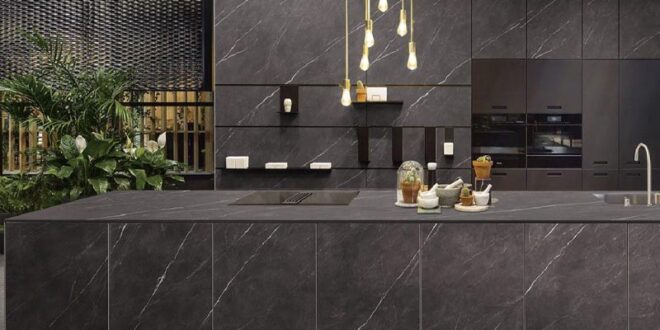Sintered Stone Countertops: A Revolution in Kitchen Design
The kitchen. It’s more than just a place to prepare meals; it’s the heart of the home. It’s where memories are made, conversations flow, and families connect. And at the center of it all? The countertop. Choosing the right countertop material is a pivotal decision, influencing not only the aesthetics but also the functionality and longevity of your kitchen. Enter sintered stone, a game-changer in the world of kitchen design.
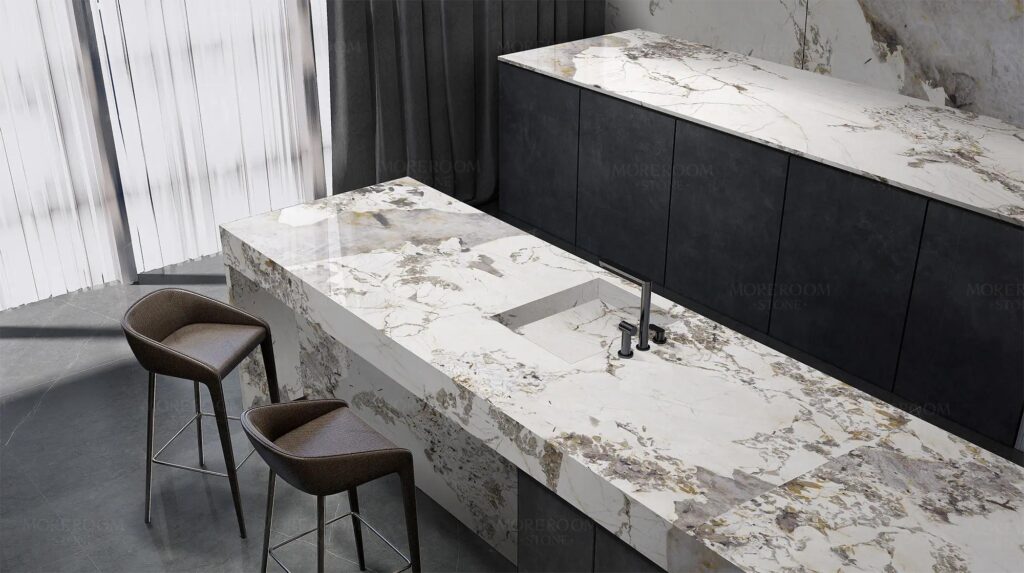
For years, granite, quartz, and marble have reigned supreme. But a new contender has emerged, promising superior performance, stunning visuals, and unparalleled versatility: sintered stone. But what exactly *is* sintered stone, and why is it rapidly becoming the darling of designers and homeowners alike? Let’s dive in.
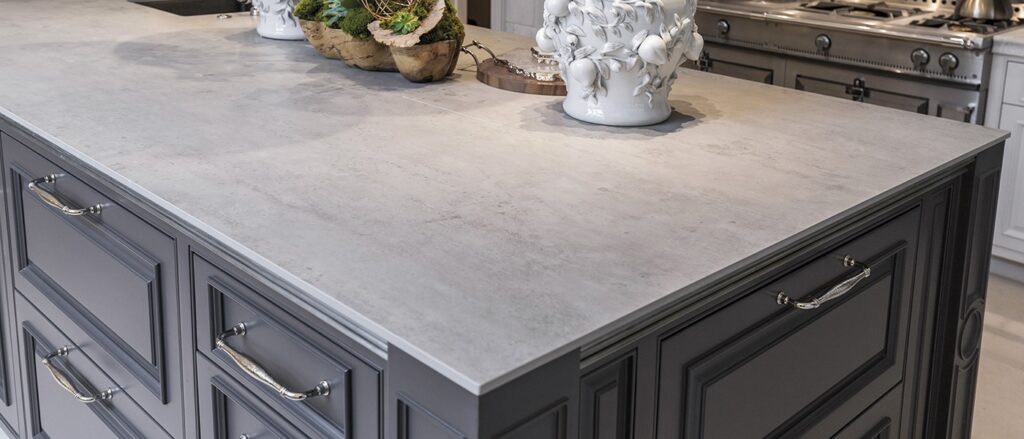
What is Sintered Stone? Unveiling the Mystery
Sintered stone isn’t your grandmother’s countertop material. It’s not a natural stone, nor is it a manufactured quartz composite. Instead, it’s a completely engineered product, crafted using a revolutionary process called sintering. Think of it as nature, amplified by technology.
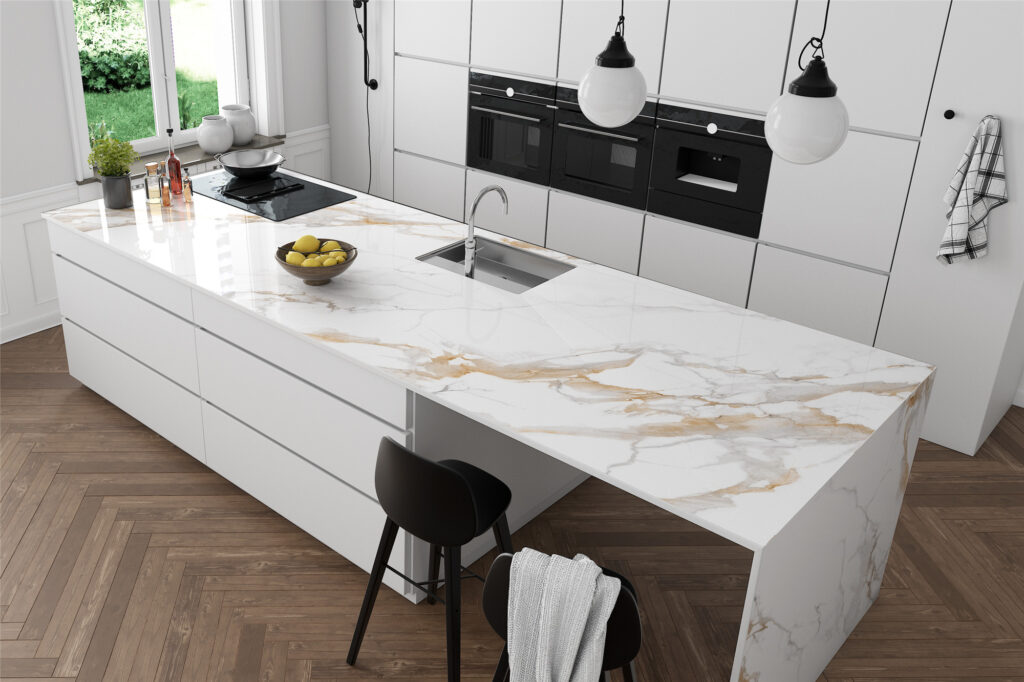
The sintering process involves subjecting a carefully selected blend of natural minerals, including granite, glass, and porcelain, to extremely high pressure and temperature. This mimics the geological processes that form natural stone over millennia, but in a fraction of the time. The result? A dense, non-porous, and incredibly durable material that’s unlike anything else on the market.
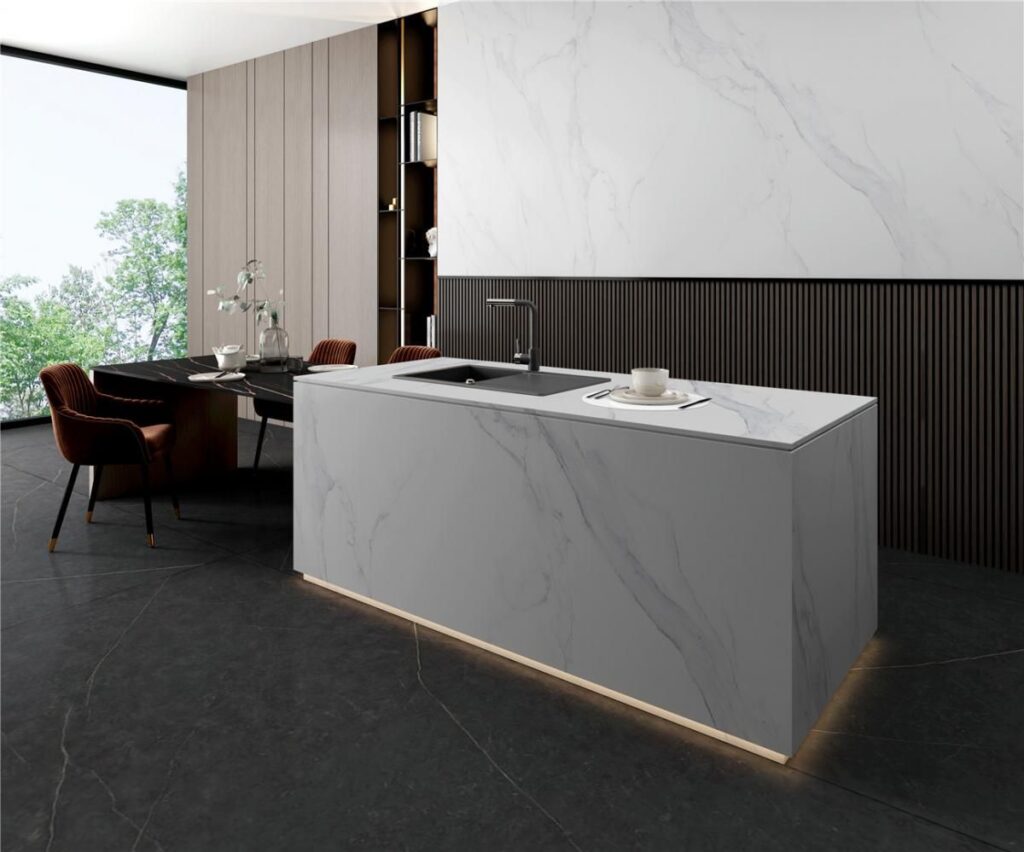
The Sintering Process: A Closer Look
To truly understand the magic of sintered stone, it’s helpful to break down the sintering process:
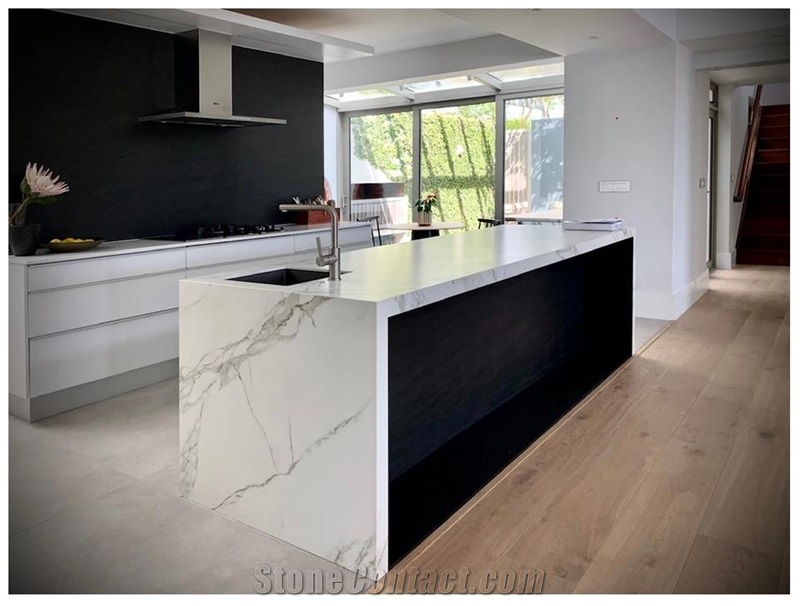
- Material Selection: It all begins with carefully chosen raw materials. Manufacturers use a blend of natural minerals, including various types of stone, glass, and porcelain. These materials are selected for their specific properties, such as hardness, color, and texture.
- Blending and Grinding: The selected minerals are then finely ground into a powder and carefully blended according to a precise formula. This ensures consistency in color, pattern, and performance.
- Pressing: The blended powder is then subjected to intense pressure, compacting it into a dense slab. This initial compaction creates a solid foundation for the next step.
- Sintering: This is where the magic happens. The compacted slab is placed in a high-temperature kiln and fired at temperatures exceeding 1200 degrees Celsius (2200 degrees Fahrenheit). This intense heat causes the mineral particles to fuse together, forming a solid, non-porous mass.
- Finishing: Once cooled, the sintered stone slab undergoes a series of finishing processes, including polishing, honing, and texturing. This enhances the surface appearance and provides the desired aesthetic.
The sintering process creates a material with exceptional properties, making it an ideal choice for kitchen countertops.
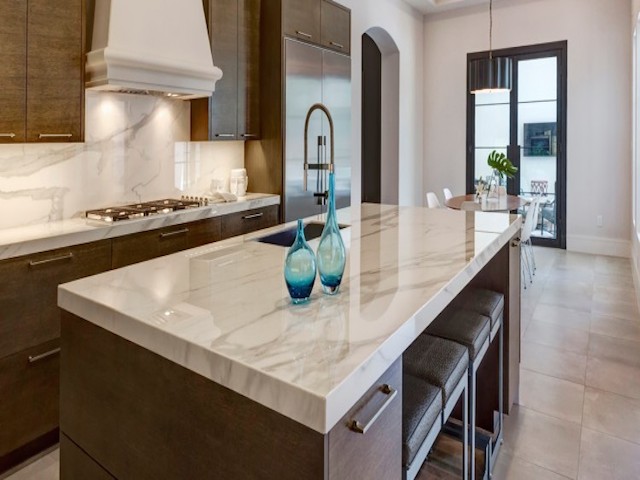
The Advantages of Sintered Stone Countertops: Why Choose It?
So, why all the buzz around sintered stone? What makes it so special? Here’s a breakdown of the key advantages:
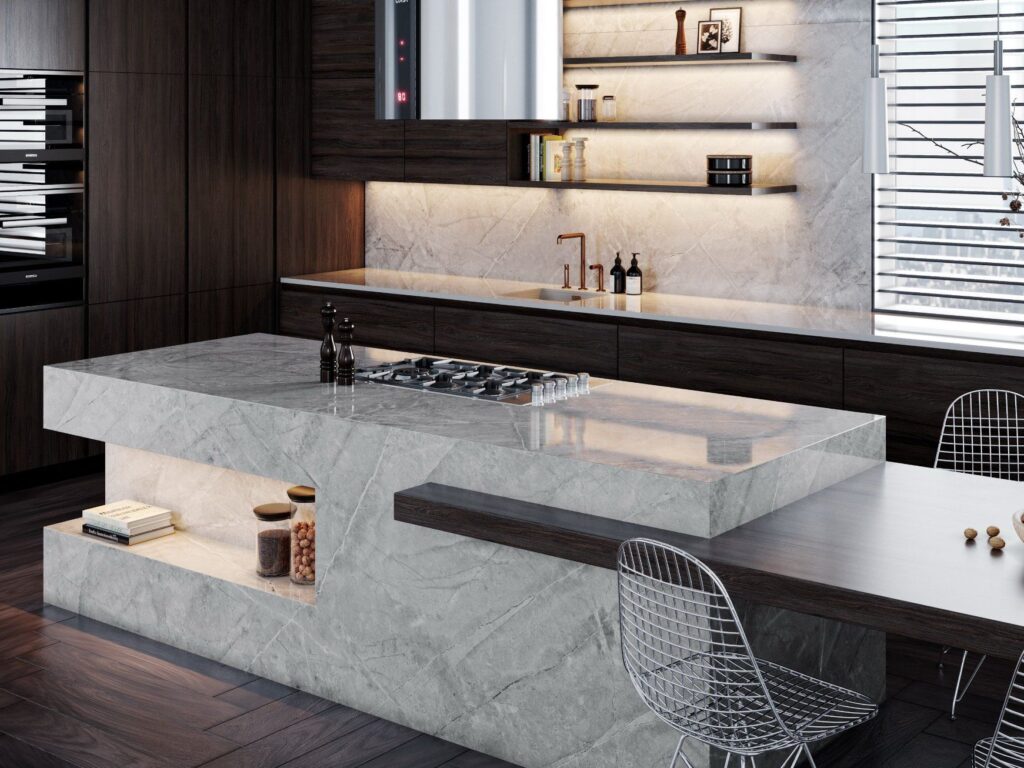
- Unmatched Durability: Sintered stone is virtually indestructible. It’s resistant to scratches, chips, cracks, and stains. You can chop directly on it (though we wouldn’t recommend it for your knives!), spill red wine without worry, and even set hot pots and pans directly on the surface without causing damage.
- Heat Resistance: Speaking of hot pots, sintered stone boasts exceptional heat resistance. It can withstand temperatures that would scorch other countertop materials, making it a worry-free choice for busy kitchens.
- Stain Resistance: Its non-porous surface means that liquids and spills won’t penetrate the material, preventing staining. Even stubborn substances like coffee, wine, and oil can be easily wiped away with a damp cloth.
- Scratch Resistance: Sintered stone is incredibly resistant to scratches, making it ideal for high-traffic kitchens. You don’t have to baby it or worry about damaging the surface with everyday use.
- UV Resistance: Unlike some other countertop materials, sintered stone is resistant to fading and discoloration from UV exposure. This makes it a great choice for kitchens with large windows or skylights.
- Low Maintenance: Keeping sintered stone countertops clean is a breeze. Simply wipe them down with a damp cloth and mild soap. No sealing or special treatments are required.
- Design Versatility: Sintered stone is available in a wide range of colors, patterns, and textures, mimicking natural stone, wood, and even metal. This allows you to create a truly unique and personalized kitchen design. Plus, it comes in large format slabs, minimizing seams and creating a sleek, modern look.
- Hygienic: The non-porous surface of sintered stone prevents the growth of bacteria and mold, making it a hygienic choice for food preparation areas.
- Environmentally Friendly: Many sintered stone manufacturers use recycled materials in their production process, and the material itself is recyclable. This makes it a more sustainable choice than some other countertop options.
In short, sintered stone offers a combination of durability, aesthetics, and practicality that’s hard to beat. It’s an investment that will pay off in the long run, providing you with a beautiful and functional kitchen for years to come.
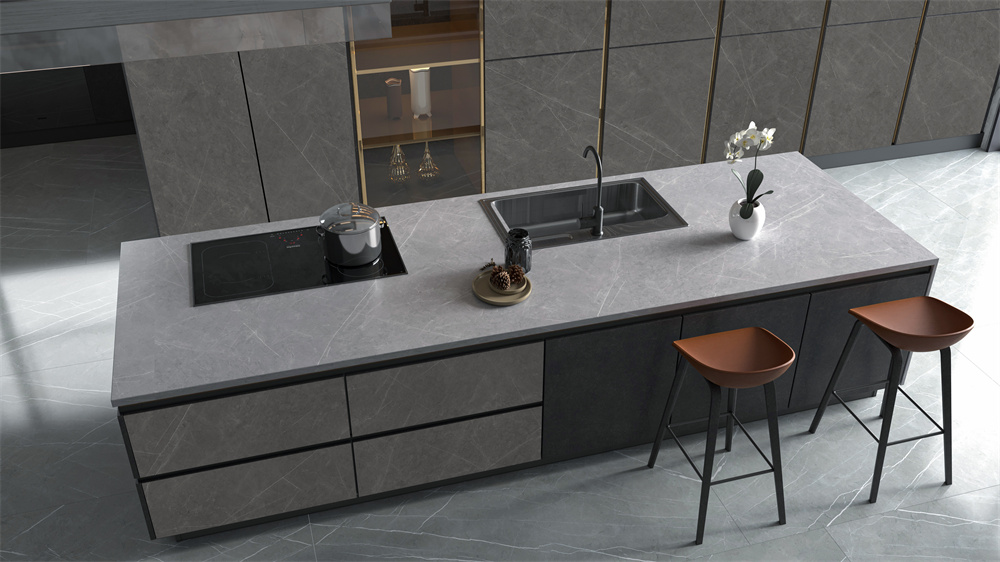
Comparing Sintered Stone to Other Countertop Materials
To truly appreciate the benefits of sintered stone, it’s helpful to compare it to other popular countertop materials. Here’s a quick rundown:
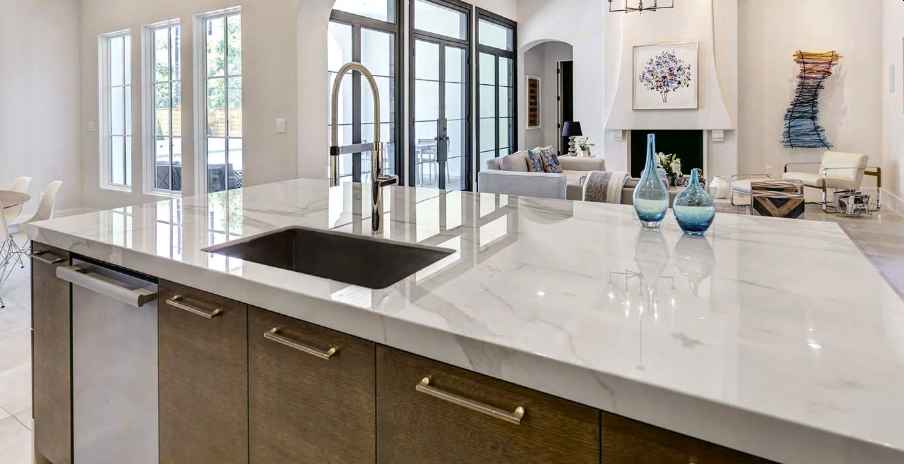
Sintered Stone vs. Granite
Granite has long been a popular choice for countertops, prized for its natural beauty and durability. However, it does have some drawbacks compared to sintered stone.
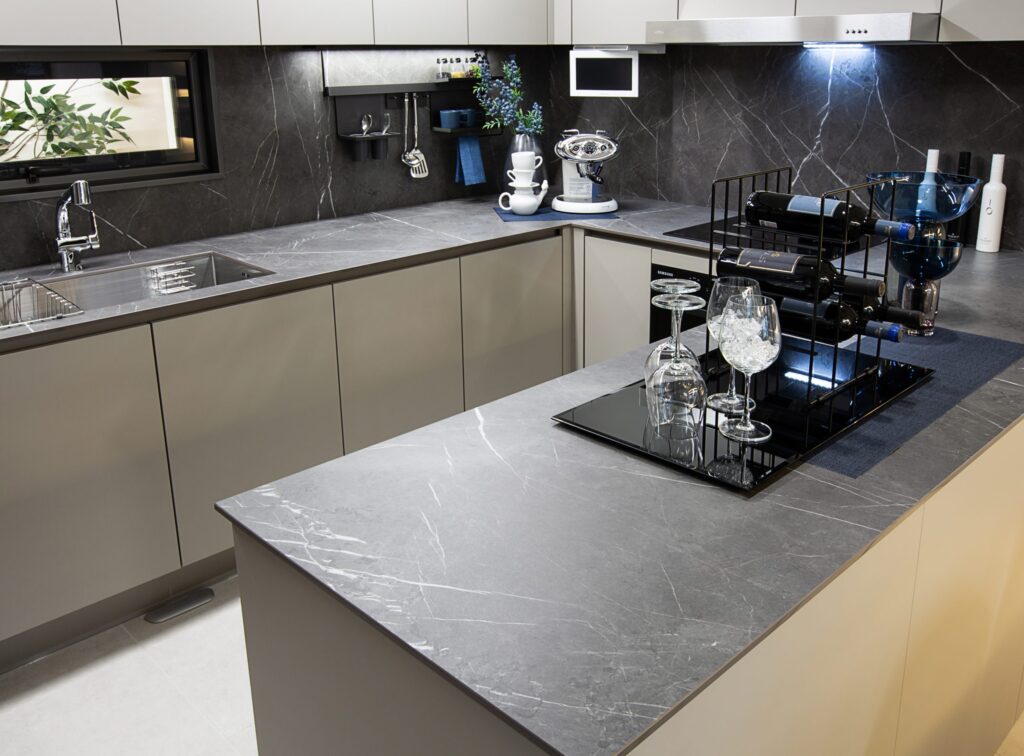
- Porosity: Granite is porous, meaning it can absorb liquids and stains if not properly sealed. Sintered stone is non-porous and requires no sealing.
- Maintenance: Granite requires regular sealing to prevent staining. Sintered stone is virtually maintenance-free.
- Scratch Resistance: While granite is fairly scratch-resistant, it can still be scratched by sharp objects. Sintered stone is significantly more scratch-resistant.
- Appearance: Granite offers natural variations in color and pattern, which some find appealing. Sintered stone can mimic the look of granite but offers more consistency and control over the design.
Sintered Stone vs. Quartz
Quartz countertops are another popular option, known for their durability and low maintenance. However, sintered stone offers some advantages over quartz as well.
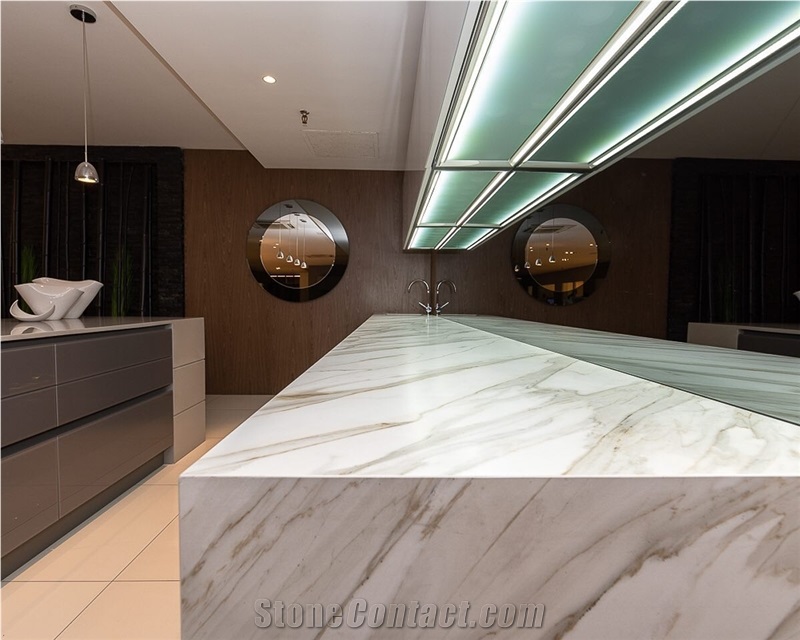
- Heat Resistance: Quartz is not as heat-resistant as sintered stone and can be damaged by hot pots and pans. Sintered stone can withstand extremely high temperatures.
- UV Resistance: Quartz can fade or discolor over time when exposed to UV light. Sintered stone is UV-resistant and will maintain its color and appearance.
- Composition: Quartz countertops are made from crushed quartz mixed with resins. Sintered stone is made from a blend of natural minerals that are fused together without resins, making it more environmentally friendly.
Sintered Stone vs. Marble
Marble is a luxurious and beautiful countertop material, but it’s also one of the most delicate. Sintered stone offers the look of marble without the drawbacks.
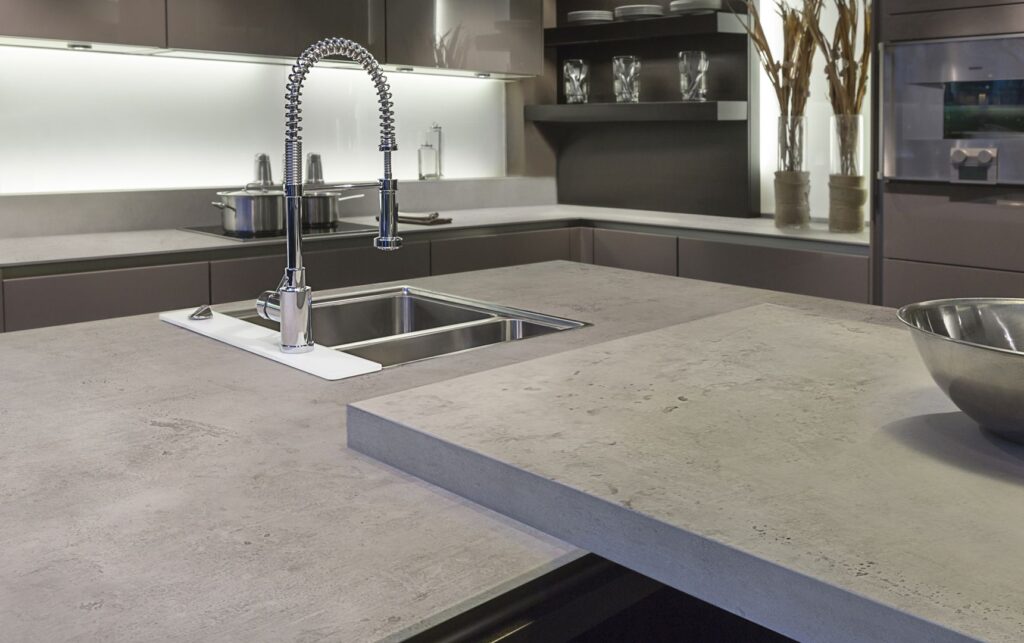
- Porosity: Marble is highly porous and prone to staining and etching. Sintered stone is non-porous and stain-resistant.
- Maintenance: Marble requires frequent sealing and careful cleaning to prevent damage. Sintered stone is virtually maintenance-free.
- Durability: Marble is easily scratched, chipped, and stained. Sintered stone is significantly more durable and resistant to damage.
Sintered Stone vs. Laminate
Laminate is a budget-friendly option, but it lacks the durability and aesthetic appeal of sintered stone.
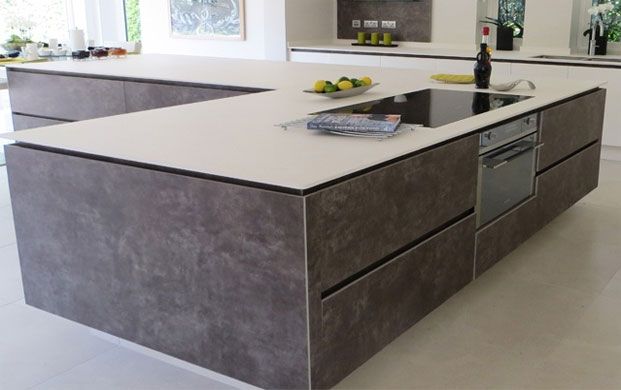
- Durability: Laminate is easily scratched, chipped, and burned. Sintered stone is incredibly durable and resistant to damage.
- Heat Resistance: Laminate is not heat-resistant and can be damaged by hot pots and pans. Sintered stone can withstand extremely high temperatures.
- Appearance: Laminate can look cheap and dated. Sintered stone offers a more luxurious and modern aesthetic.
In summary, while each countertop material has its own strengths and weaknesses, sintered stone offers a unique combination of durability, aesthetics, and practicality that makes it a standout choice for kitchen countertops.
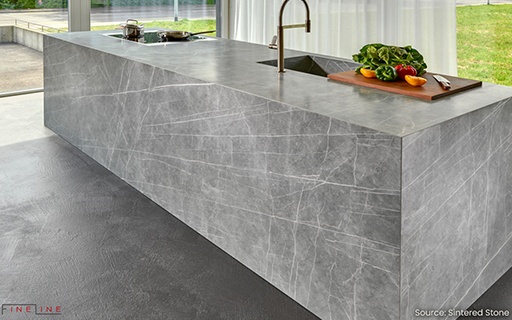
Choosing the Right Sintered Stone for Your Kitchen
With a wide range of colors, patterns, and textures available, choosing the right sintered stone for your kitchen can feel overwhelming. Here are some factors to consider:
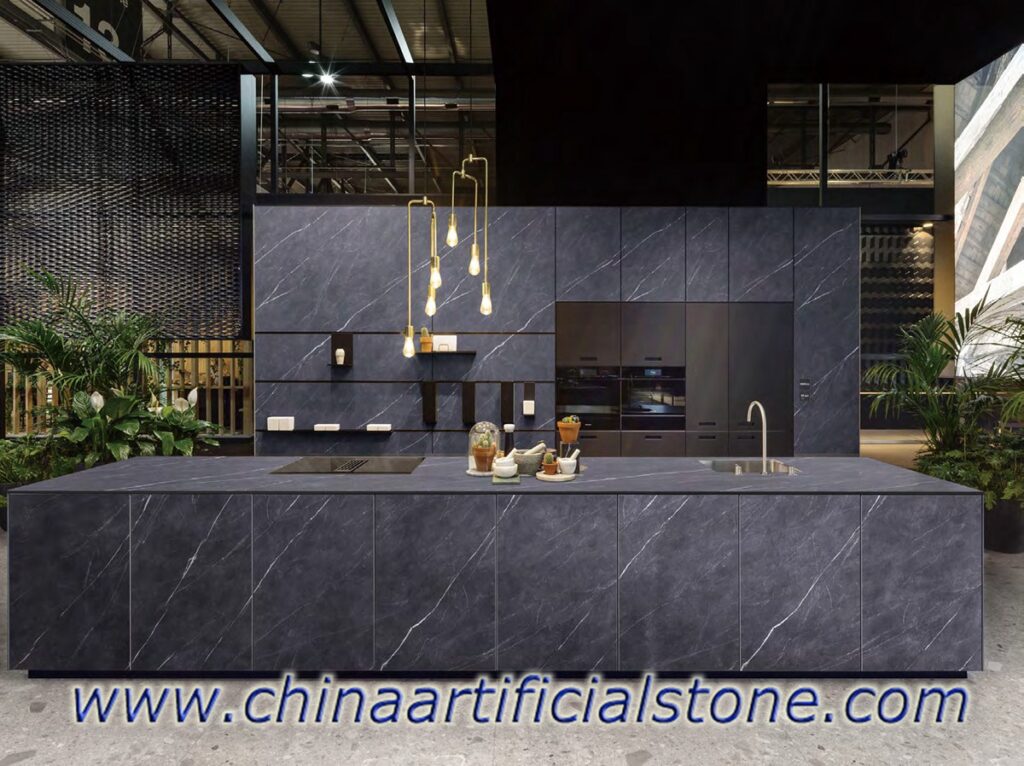
- Kitchen Style: Consider the overall style of your kitchen. Do you prefer a modern, minimalist look? Or a more traditional, rustic feel? Choose a sintered stone that complements your existing décor.
- Color Palette: Think about the colors of your cabinets, flooring, and backsplash. Choose a sintered stone that harmonizes with your existing color palette or provides a striking contrast.
- Pattern and Texture: Sintered stone is available in a variety of patterns and textures, from smooth and polished to textured and rustic. Consider the overall look you want to achieve and choose a pattern and texture that fits your vision.
- Slab Size: Sintered stone is available in large-format slabs, which can minimize seams and create a sleek, modern look. Consider the size of your countertops and choose a slab size that minimizes waste and seams.
- Edge Profile: The edge profile of your countertops can have a significant impact on the overall look. Choose an edge profile that complements your kitchen style and personal preferences. Popular options include eased edges, bullnose edges, and mitered edges.
- Budget: Sintered stone can be more expensive than some other countertop materials, but it’s an investment that will pay off in the long run. Set a budget and choose a sintered stone that fits your price range.
It’s also a good idea to visit a showroom and see different sintered stone samples in person. This will allow you to get a better sense of the colors, patterns, and textures and help you make a more informed decision. Talk to a professional designer or contractor for expert advice and guidance.
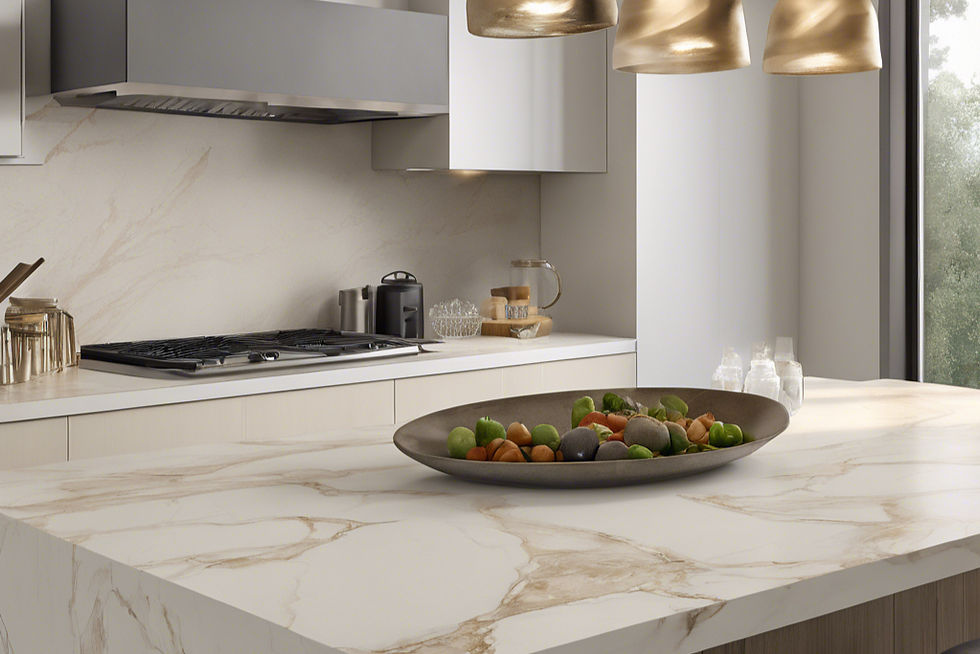
Sintered Stone Countertop Installation: What to Expect
Proper installation is crucial for ensuring the longevity and performance of your sintered stone countertops. Here’s what you can expect during the installation process:

- Templating: The first step is to create a template of your countertops. This is typically done by a professional installer who will use a laser template or physical template to accurately measure and map out the countertop area.
- Fabrication: Once the template is created, the sintered stone slabs are fabricated to the exact dimensions of your countertops. This involves cutting, shaping, and finishing the edges of the slabs.
- Installation: The fabricated slabs are then transported to your home and installed by the professional installer. The installer will carefully position the slabs, ensuring they are level and properly aligned.
- Seam Treatment: If your countertops require seams, the installer will carefully join the slabs together and apply a color-matched epoxy or sealant to create a seamless look.
- Finishing Touches: The installer will then clean the countertops and apply any necessary sealants or coatings to protect the surface.
It’s important to hire a qualified and experienced installer to ensure that your sintered stone countertops are installed correctly. A poor installation can lead to problems such as cracking, chipping, and staining.
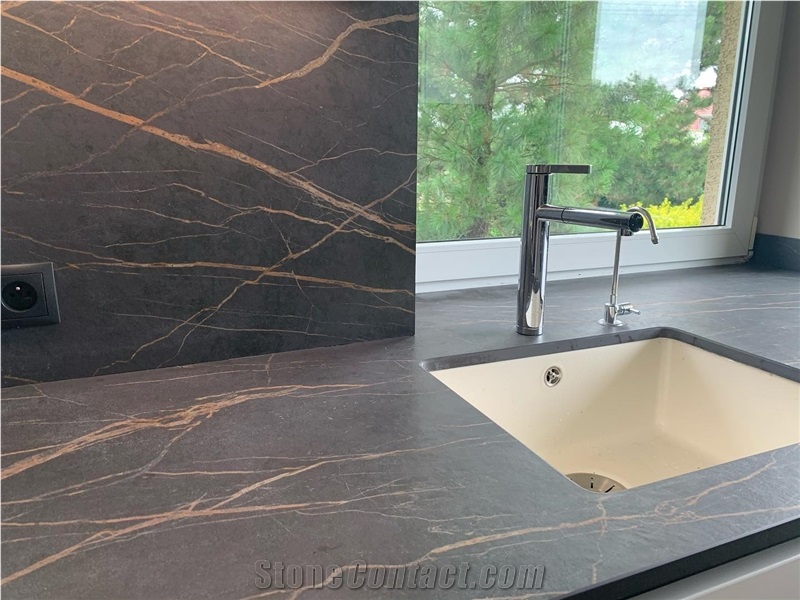
Caring for Your Sintered Stone Countertops: Simple Maintenance Tips
One of the best things about sintered stone countertops is their low maintenance. Here are some simple tips to keep them looking their best:
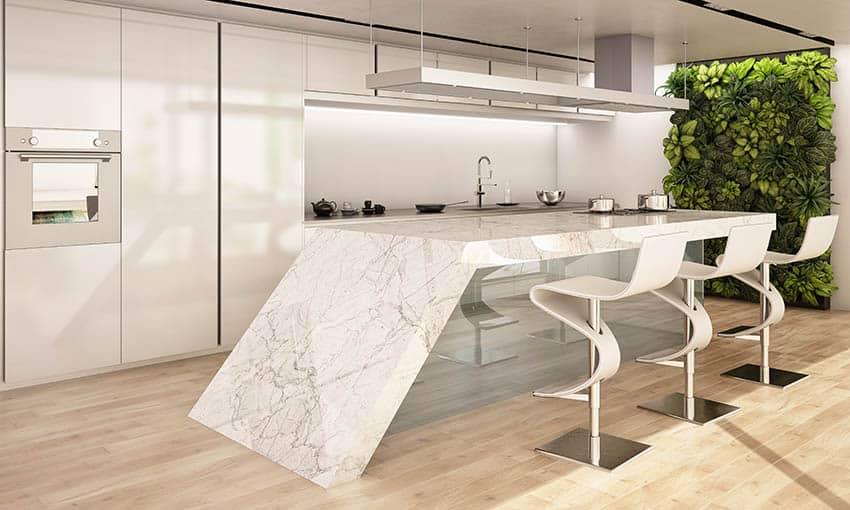
- Daily Cleaning: Wipe down your countertops with a damp cloth and mild soap after each use. This will prevent the buildup of dirt and grime.
- Spill Cleanup: Clean up spills immediately to prevent staining. While sintered stone is stain-resistant, it’s always best to be proactive.
- Avoid Harsh Chemicals: Avoid using harsh chemicals, abrasive cleaners, or scouring pads on your countertops. These can damage the surface.
- Use Cutting Boards: While sintered stone is scratch-resistant, it’s still a good idea to use cutting boards to protect your knives and prevent any potential scratches.
- Use Trivets: Although sintered stone is heat-resistant, using trivets or hot pads under hot pots and pans is recommended to protect the surface and prevent thermal shock.
- No Sealing Required: Unlike natural stone countertops, sintered stone does not require sealing.
With proper care, your sintered stone countertops will maintain their beauty and performance for many years to come.
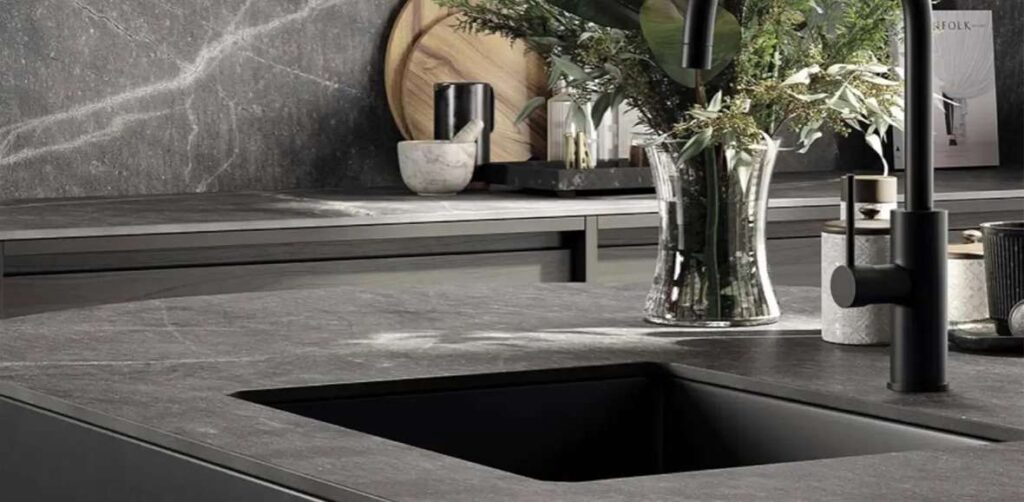
Addressing Common Concerns About Sintered Stone
While sintered stone is gaining popularity, some homeowners still have concerns about it. Let’s address some common questions:
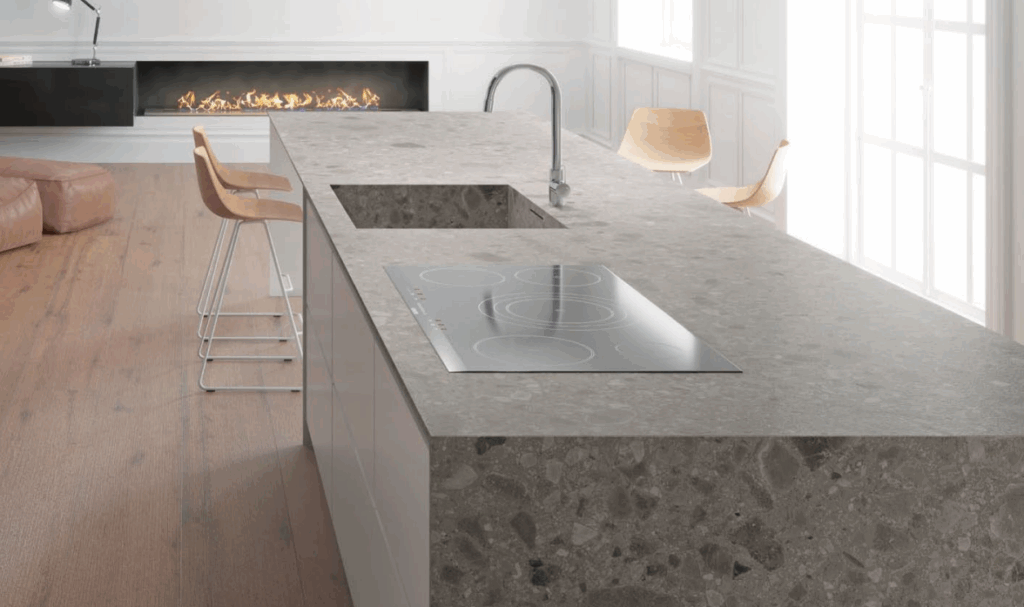
- Is sintered stone expensive? Sintered stone can be more expensive than some other countertop materials, but it’s an investment that will pay off in the long run. Its durability, low maintenance, and aesthetic appeal make it a worthwhile investment.
- Is sintered stone difficult to repair? While sintered stone is incredibly durable, it can be damaged in rare cases. Repairs can be challenging and may require a professional. However, with proper care, you can minimize the risk of damage.
- Does sintered stone look artificial? Sintered stone is available in a wide range of colors, patterns, and textures, including options that mimic natural stone. It can be difficult to distinguish sintered stone from natural stone, especially with high-quality products.
- Is sintered stone environmentally friendly? Many sintered stone manufacturers use recycled materials in their production process, and the material itself is recyclable. This makes it a more sustainable choice than some other countertop options.
The Future of Kitchen Countertops: Sintered Stone Leading the Way
Sintered stone is more than just a trend; it’s a revolution in kitchen design. Its exceptional durability, versatility, and aesthetic appeal are making it the go-to choice for homeowners and designers alike. As technology continues to advance, we can expect to see even more innovative applications of sintered stone in the future.
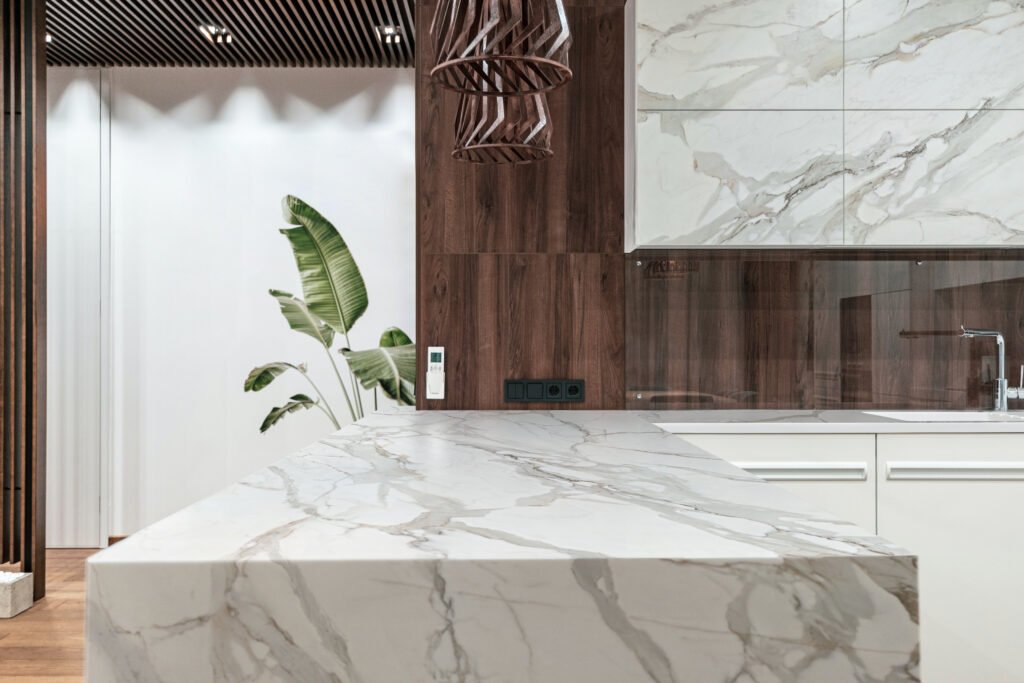
From sleek and modern kitchens to warm and inviting spaces, sintered stone offers endless possibilities for creating the kitchen of your dreams. So, if you’re looking for a countertop material that combines beauty, durability, and practicality, look no further than sintered stone.
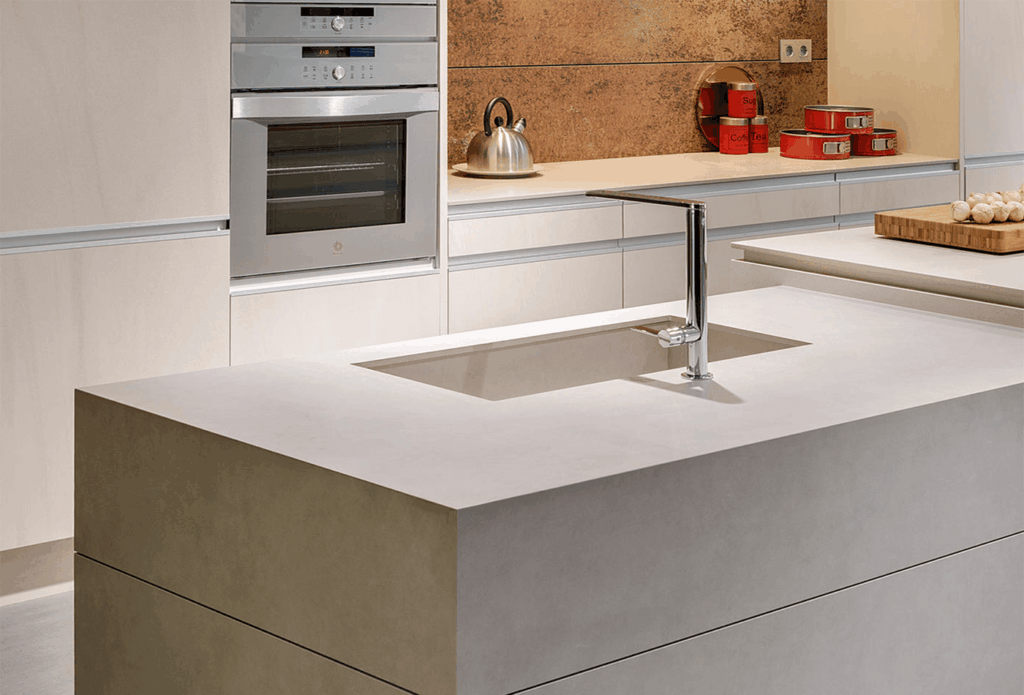
Finding a Reputable Sintered Stone Supplier and Installer
Choosing the right supplier and installer is just as important as choosing the right sintered stone itself. Here’s what to look for:
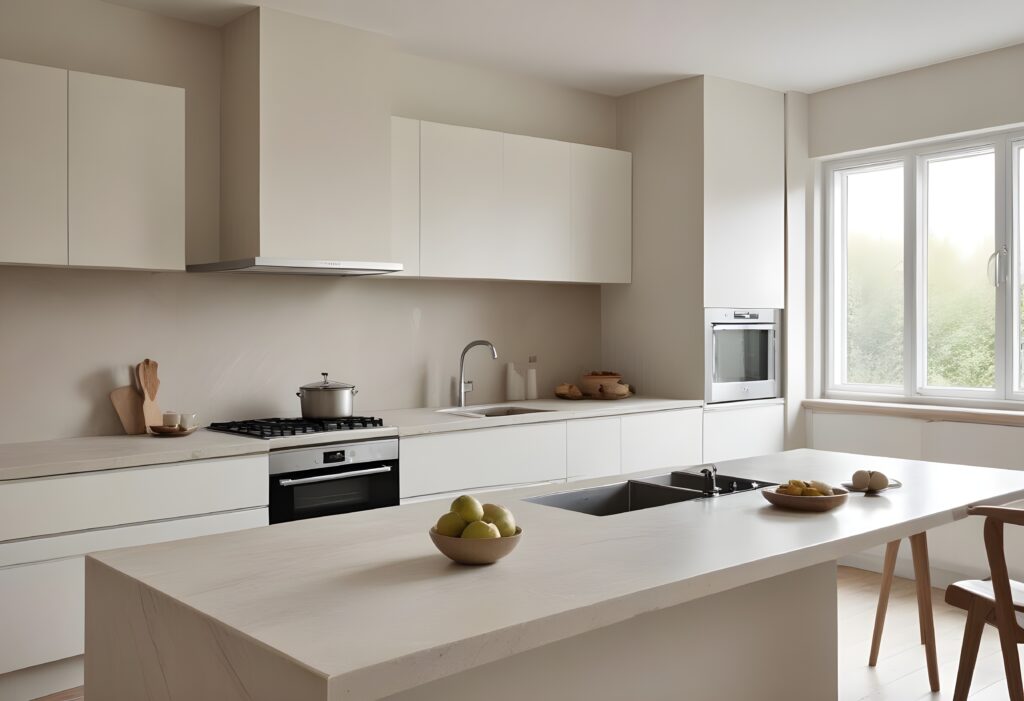
- Experience: Look for a supplier and installer with extensive experience working with sintered stone. They should be familiar with the material’s properties, fabrication techniques, and installation procedures.
- Reputation: Check online reviews and ask for referrals from friends, family, or colleagues. A reputable supplier and installer will have a track record of satisfied customers.
- Certifications: Look for certifications from industry organizations, such as the Marble Institute of America (MIA) or the National Kitchen and Bath Association (NKBA). These certifications indicate that the supplier and installer have met certain standards of quality and professionalism.
- Warranty: Make sure the supplier and installer offer a warranty on their products and services. This will protect you in case of any defects or problems.
- Portfolio: Ask to see a portfolio of their previous work. This will give you a better sense of their capabilities and style.
- Customer Service: Choose a supplier and installer who provides excellent customer service. They should be responsive to your questions and concerns, and they should be willing to work with you to create the kitchen of your dreams.
Don’t be afraid to shop around and get quotes from multiple suppliers and installers before making a decision. This will help you find the best value for your money and ensure that you’re working with a reputable and qualified professional.
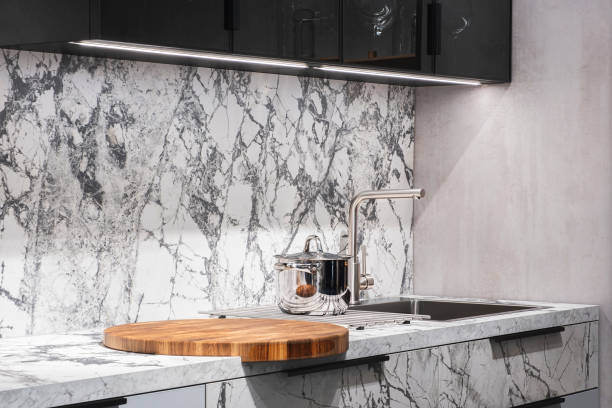
Beyond Countertops: Other Applications of Sintered Stone in the Kitchen
While sintered stone is primarily known for its use in countertops, its versatility extends far beyond that. Here are some other ways you can incorporate sintered stone into your kitchen design:
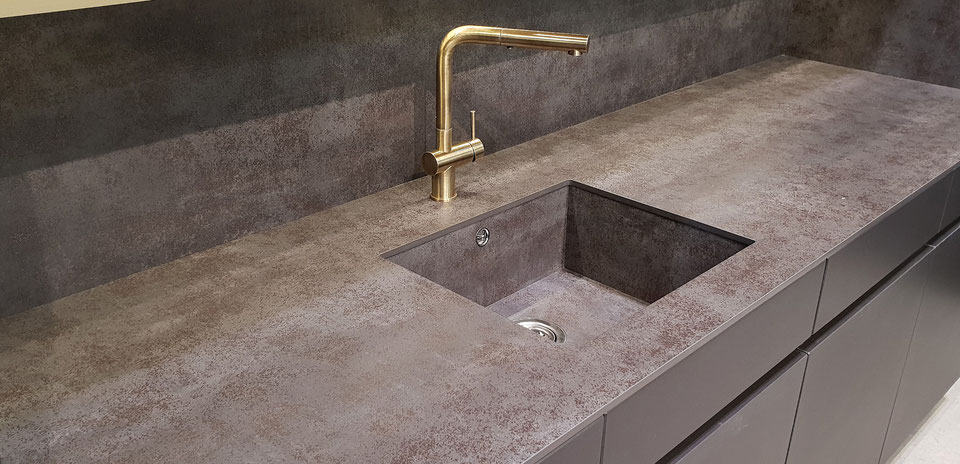
- Backsplashes: Sintered stone backsplashes are a great way to add a touch of elegance and sophistication to your kitchen. They’re easy to clean and maintain, and they can be customized to match your countertops.
- Flooring: Sintered stone flooring is durable, water-resistant, and easy to clean, making it an ideal choice for kitchens. It’s also available in a wide range of colors and patterns, allowing you to create a unique and stylish floor.
- Wall Cladding: Sintered stone can be used to clad walls in the kitchen, creating a seamless and modern look. It’s also a great way to add texture and dimension to your space.
- Island Facades: Use sintered stone to create a stunning facade for your kitchen island. This will add a touch of luxury and sophistication to your kitchen design.
- Sink Surrounds: Sintered stone is an excellent material for sink surrounds, as it’s water-resistant and easy to clean. It can also be seamlessly integrated with your countertops for a cohesive look.
- Custom Furniture: Sintered stone can be used to create custom furniture for your kitchen, such as tables, shelves, and cabinets. This will allow you to create a truly unique and personalized space.
With its versatility and durability, sintered stone is a versatile material that can be used in a variety of applications in the kitchen. Let your imagination run wild and explore the possibilities!
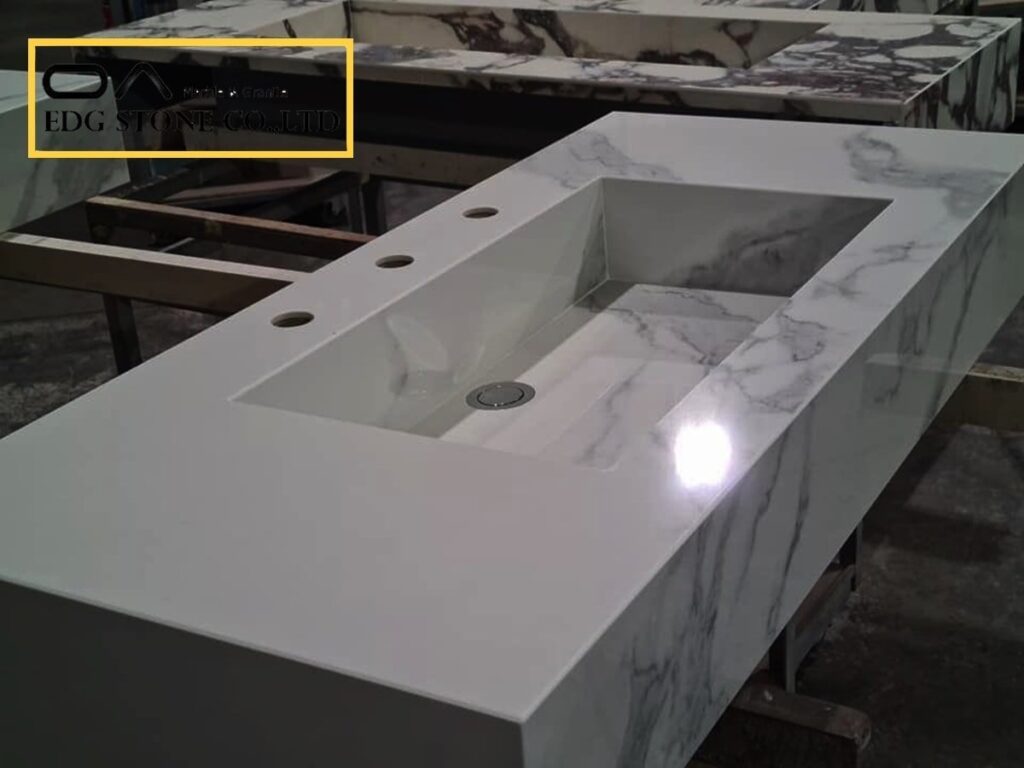
Is Sintered Stone the Right Choice for You? A Final Assessment
Choosing the right countertop material is a big decision. It involves weighing various factors, including aesthetics, durability, maintenance, and budget. Sintered stone offers a compelling combination of these qualities, making it a strong contender for many homeowners.
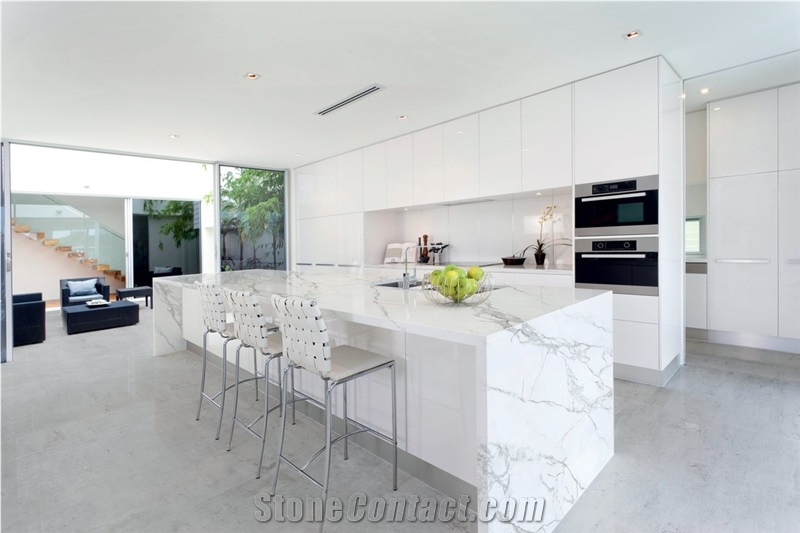
If you prioritize durability, low maintenance, and design versatility, sintered stone is definitely worth considering. Its resistance to scratches, stains, heat, and UV light makes it a worry-free choice for busy kitchens. Its wide range of colors, patterns, and textures allows you to create a truly unique and personalized space.
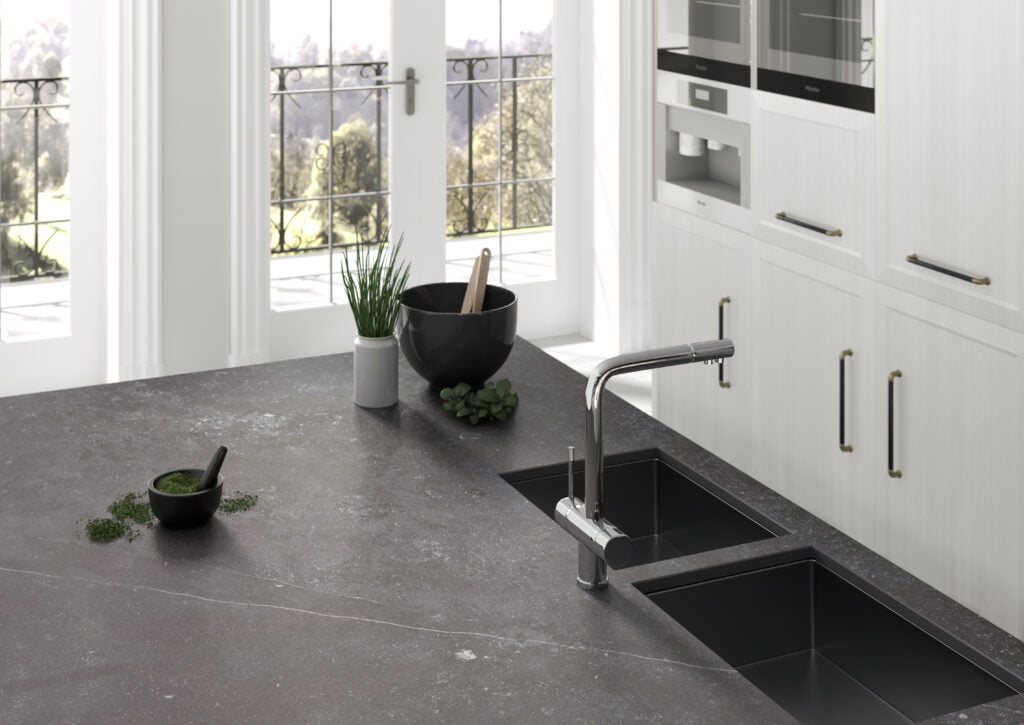
However, it’s important to consider your budget and lifestyle. Sintered stone can be more expensive than some other countertop materials, and while it’s incredibly durable, it’s not indestructible. If you’re on a tight budget or if you’re prone to being rough on your countertops, you may want to explore other options.
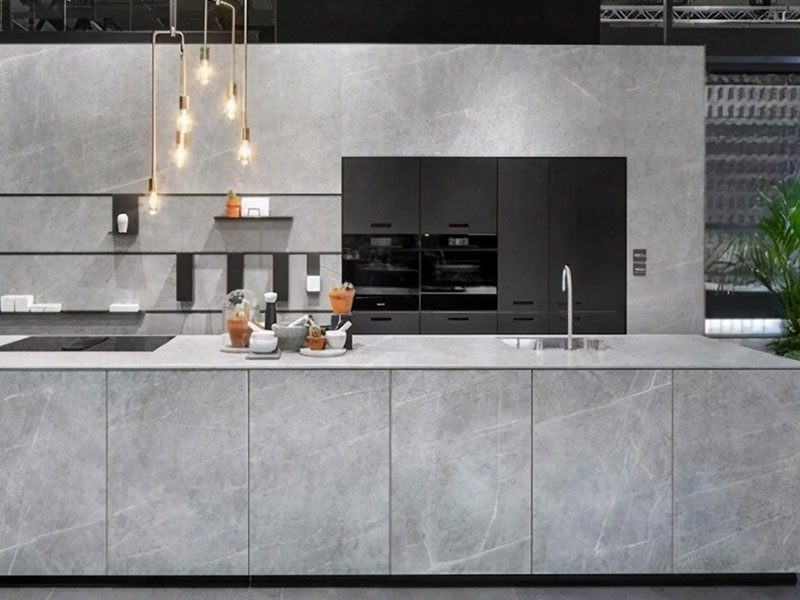
Ultimately, the best way to decide if sintered stone is right for you is to do your research, visit a showroom, and talk to a professional designer or contractor. They can help you assess your needs and preferences and determine if sintered stone is the best fit for your kitchen.
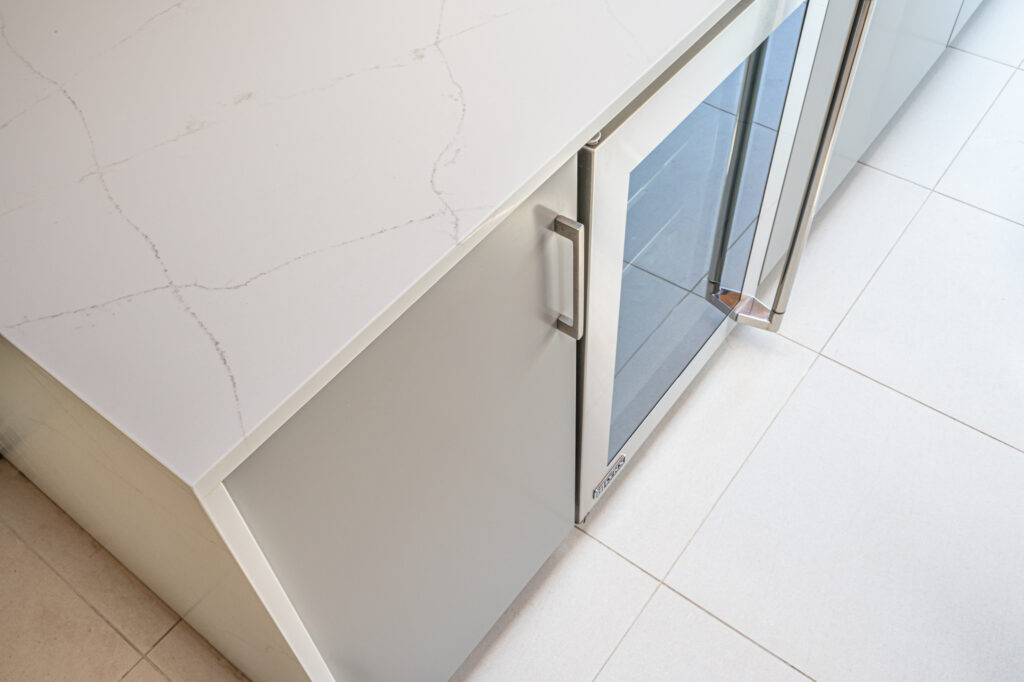
Whether you’re renovating your entire kitchen or simply upgrading your countertops, sintered stone is a material that’s worth exploring. With its exceptional properties and stunning aesthetics, it has the potential to transform your kitchen into a space that’s both beautiful and functional.
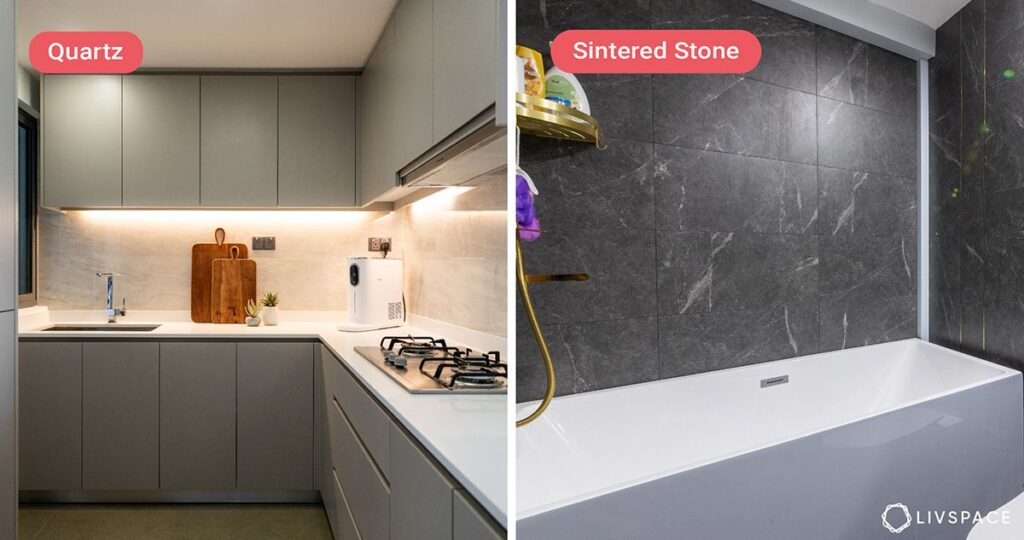
 Nimila
Nimila
